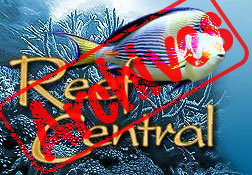

|
|
|
|
|
#1
|
|||
|
|||
|
Reef Dosing
I just set up a 250G tank and waiting for it to cycle before adding anyhting. What do you guys usually dose to help make it a better reef system? Also how often and what should I test to maintain it. Thanks guys

|
|
#2
|
|||
|
|||
|
while is is cycling monitor your ammonia, nitrites and nitrates.
after your tank has cycled----monitor your pH, alkalinity level, and salinity. after you start to add inverts, fish etc then also monitor your calcium and magnesium levels. You should not have to dose with anything for the next couple of months. cycling and curing of live rock will cause variations in pH and alkalinity etc but these should come within acceptable levels by themselves. Water changes every two weeks --10 per cent helfps alot in the stability of the chemistry of your water. ----that said never dose before measuring----never dose before posting here  I would highly recommend a b-ionics two part system for dosing. This takes care of your alkalinity, calcium and indirectly your pH and brings stability to it. It takes about three min every night to add the required amt of each. ----again you should not even have to do that until you start adding critters.
__________________
"evrr bean to sea Billy--evrr smelled a fish?" "Aye capn..experience is the best teacher" |
|
#3
|
|||
|
|||
|
Thank you so much for your time and explanation

|
|
#4
|
|||
|
|||
|
I agree with cap'n.
You don't need to deal with calcium and alkalinity for a while. Commercialy prepared two part works but may be costly for a 250gal. There are alternatives which you should review when you are ready to dose these. They include: homemade reciepees, limewater(kalk) and calcium reactors.
__________________
Tom |
|
#5
|
|||
|
|||
|
Sorry one more question. Is there a good controller or gadget that would measure ph, temp, salinity, calcium, etc without using these annoying test strips? Thanks
|
|
#6
|
|||
|
|||
|
i would say.........if you can't test for it and keep the levels in check, then don't dose it.
|
|
#7
|
|||
|
|||
|
I am willing to test everyday, but was wondering if there was an easier way to test. Thanks
|
|
#8
|
|||
|
|||
|
After the calcium and alkalinity dosing schedule is set, daily testing shouldn't be needed. I test pH, alkalinity, temperature, and SG every few weeks, and calcium and magnesium every few months.
__________________
Jonathan Bertoni |
|
#9
|
|||
|
|||
|
There are a number of gadgets and test kits. This hobby has all sorts of available gadgetry but it's pricey.
Some you may wish to study and evaluate including: refractometer for salinity,ph monitor(American Marine pinpoint or Milwaukee). There are also calcium monitors,orp monitors,digital thermometers,lux meters,total disolved solids meters and so on. I find the ph monitor,refractometer and digital thermometer and the total dissoved solids meter quite usefull and convenient. For the rest good test kits are more than adeqate. I test major parameters every two weeks and monitor ph and temp on an ongiong basis. I check salinity a bit more frequently as water changes occur.
__________________
Tom |
|
#10
|
|||
|
|||
|
Here is a list of the recommended levels for a reef tank and are listed in order of importance. Bookmark this for future reference. Or print it out.
Reef Water Parameters http://www.reefkeeping.com/issues/2004-05/rhf/index.htm Once your biological filtration takes hold, I would start concentrating on the big three. Calcium, Alkalinity and Magnesium. 
|
|
#11
|
|||
|
|||
|
Thanks for all the help guys. I am gonna get some of the pinpoint monitors to help with testing, and also get the bionics 2 part for future dosing. I will let you know how everything goes after the tank completes cycling. Thaaaanks
|
|
#12
|
|||
|
|||
|
You're welcome! Good luck!
__________________
Jonathan Bertoni |
|
#13
|
|||
|
|||
|
I live to add table shrimp to help with the cycling process. I usually add a lot of shrimp to simulate a massive bioload. Wait a few weeks for ammonia, nitrate, and nitrite levels to equilibrate, and you will have a tank with a bacterial flora that can handle MANY tank inhabitants. Also, before adding critters you may want to check alkalinity and pH. These can change unfavorably due to microbial production of organic acids and wastes. [violation]
Last edited by billsreef; 12/14/2007 at 03:20 PM. |
|
#14
|
|||
|
|||
|
[violation]
Last edited by mhurley; 12/14/2007 at 10:29 AM. |
|
|